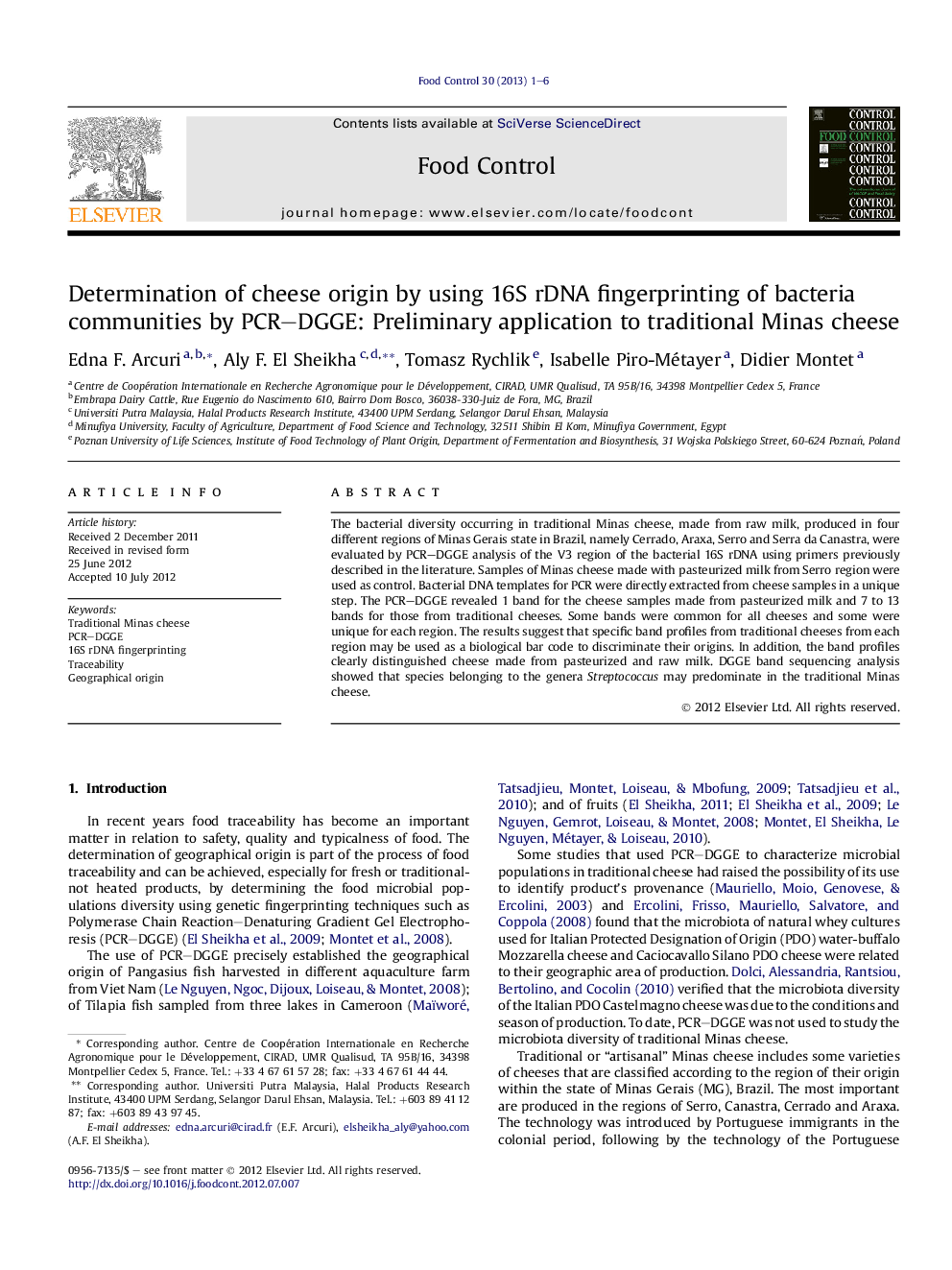| Article ID | Journal | Published Year | Pages | File Type |
|---|---|---|---|---|
| 6393371 | Food Control | 2013 | 6 Pages |
The bacterial diversity occurring in traditional Minas cheese, made from raw milk, produced in four different regions of Minas Gerais state in Brazil, namely Cerrado, Araxa, Serro and Serra da Canastra, were evaluated by PCR-DGGE analysis of the V3 region of the bacterial 16S rDNA using primers previously described in the literature. Samples of Minas cheese made with pasteurized milk from Serro region were used as control. Bacterial DNA templates for PCR were directly extracted from cheese samples in a unique step. The PCR-DGGE revealed 1 band for the cheese samples made from pasteurized milk and 7 to 13 bands for those from traditional cheeses. Some bands were common for all cheeses and some were unique for each region. The results suggest that specific band profiles from traditional cheeses from each region may be used as a biological bar code to discriminate their origins. In addition, the band profiles clearly distinguished cheese made from pasteurized and raw milk. DGGE band sequencing analysis showed that species belonging to the genera Streptococcus may predominate in the traditional Minas cheese.
⺠We apply DGGE to analyze all bacteria to create linkage between bacteria and their origins. ⺠Biological markers of bacteria are considered unique biological bar code for each country. ⺠We proposed PCR-DGGE technique as a rapid analytical traceability tool for the traditional Minas cheese.
